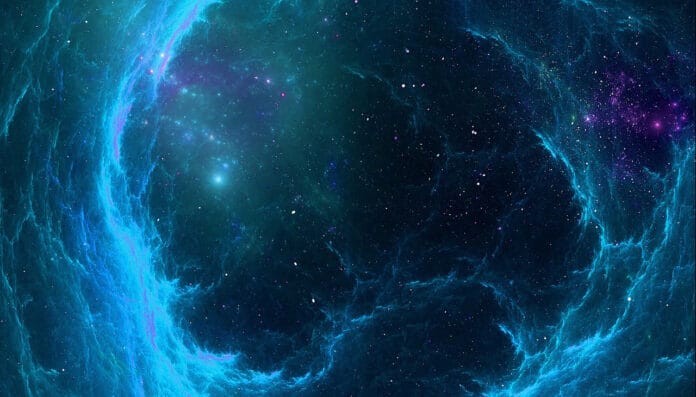Dark matter is the mysterious stuff that fills the universe, but no one has ever seen it. It is a hypothetical form of matter and has always been an intriguing topic in astronomy and astrophysics.
Although, the nature of dark matter remains mysterious. Theoretical calculations have predicted that dark matter density distribution would be altered by a massive black hole. Still, no promising evidence has been observed to verify this theoretical suggestion.
A research team from The Education University of Hong Kong (EdUHK) has proven that there is a substantial amount of dark matter surrounding black holes. The team chose two nearby binary systems (A0620-00 and XTE J1118+480) with black holes as their research subjects. Based on the companion stars’ orbits, measurements show that their orbital decay rates are about one millisecond (1 ms) per year, which is about 50 times higher than the theoretical estimate of 0.02ms per year.
The team then applied the ‘dark matter dynamical friction model’ to determine whether dark matter exists around black holes. The model is a theory widely held in academia – to the two chosen binary systems through computer simulations.
Scientists found that the fast orbital decay of the companion stars precisely matches the data observed.
This is indirect evidence of dark matter around black holes that can generate significant dynamical friction, slowing down the orbital speed of the companion stars. It also represents a breakthrough in dark matter research.
Dr. Chan Man-ho, Associate Professor in the Department of Science and Environmental Studies and Principal Investigator, explained that such a high density of dark matter would create dynamic friction to the companion star similar to the drag force.”
“This is the first-ever study to apply the ‘dynamical friction model’ to validate and prove the existence of dark matter surrounding black holes. The study provides an important new direction for future dark matter research.”
Dr. Chan further mentioned that previous studies, which relied mostly on gamma rays and gravitational wave detection to examine the presence of dark matter, depended on the occurrence of rare events, such as a merger of two black holes. According to him, that might require a prolonged waiting time for astronomers.”
Journal Reference:
- Man Ho Chan and Chak Man Lee. Indirect Evidence for Dark Matter Density Spikes around Stellar-mass Black Holes. The Astrophysical Journal Letters. DOI 10.3847/2041-8213/acaafa
